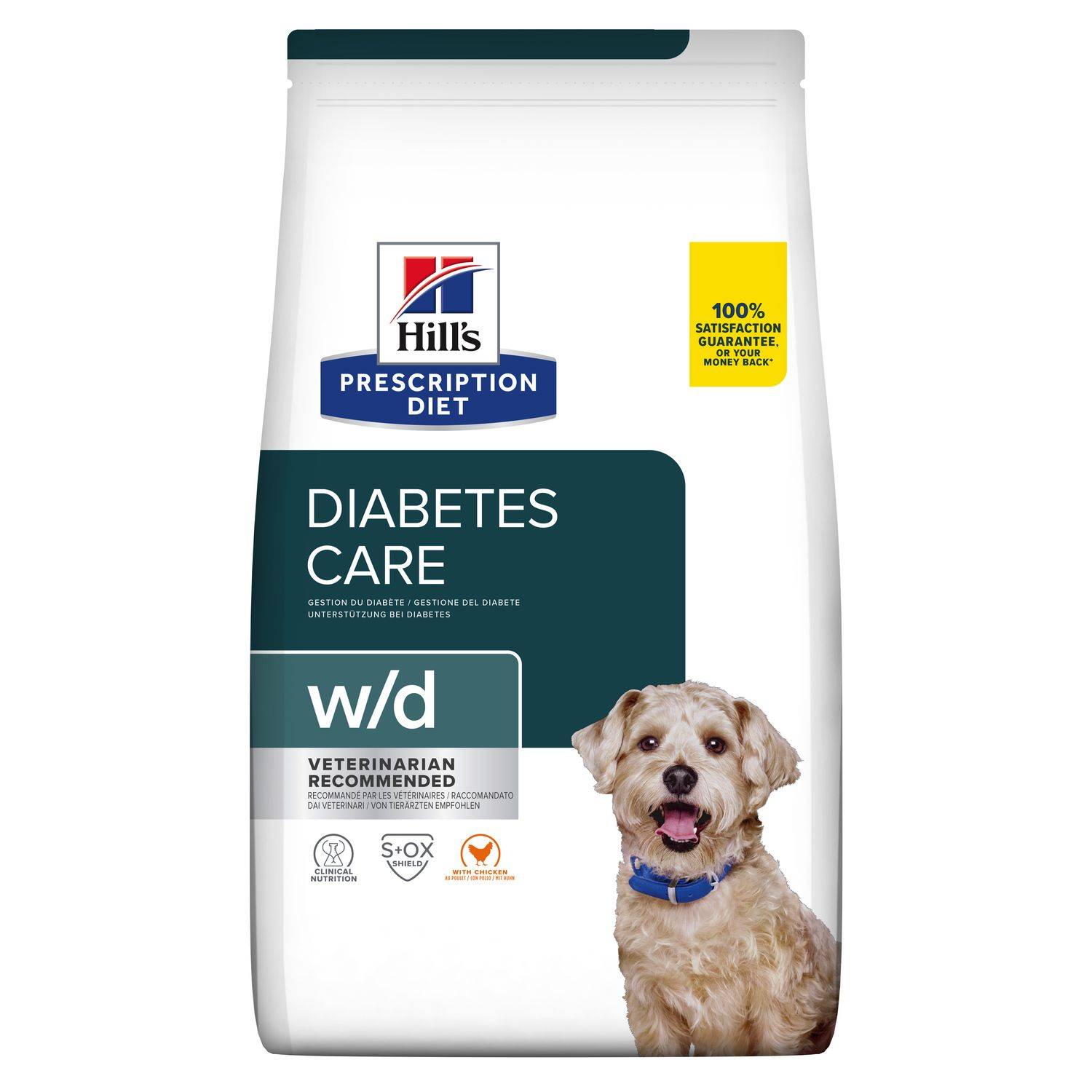Dog food for diabetes is specifically formulated to regulate blood sugar levels and support overall health in diabetic dogs. This specialized diet helps control insulin levels and provides essential nutrients.
Dogs with diabetes require a well-balanced diet that is low in carbohydrates and high in protein. Regular veterinary check-ups and close monitoring of blood glucose levels are also crucial for managing diabetes in dogs. It is important to consult with a veterinarian to determine the best dietary plan for your diabetic dog’s specific needs.

Credit: www.entirelypets.com
What Is Canine Diabetes?
Canine diabetes, also known as diabetes mellitus, is a chronic condition in dogs that affects their ability to regulate blood sugar levels. Similar to diabetes in humans, it occurs when the pancreas does not produce enough insulin or the body becomes resistant to the insulin produced.
This subheading will explore the definition and an overview of canine diabetes, including its prevalence and associated risk factors.
Definition And Overview:
- Canine diabetes is a chronic condition characterized by the body’s inability to regulate blood sugar levels properly.
- It occurs when the pancreas does not produce enough insulin or when the body fails to utilize insulin effectively.
- Insulin is a hormone that helps glucose enter cells, where it is used for energy.
- Without proper insulin regulation, glucose builds up in the bloodstream, leading to high blood sugar levels, known as hyperglycemia.
- Canine diabetes can be classified into two types: Type 1, which is insulin deficiency, and type 2, which involves insulin resistance.
- Type 1 diabetes is more common in dogs, particularly in middle-aged or older dogs, while type 2 diabetes is typically seen in overweight or obese dogs.
- The condition can be managed through a combination of insulin therapy, diet control, and exercise.
- Recognizing the early signs of canine diabetes is crucial for timely diagnosis and treatment.
Prevalence And Risk Factors:
- Canine diabetes is increasingly prevalent and affects a significant number of dogs globally.
- While specific prevalence rates vary, it is estimated that approximately 1 in every 200 dogs develops diabetes.
- Certain dog breeds, such as samoyeds, poodles, and miniature schnauzers, are more predisposed to the condition.
- Obesity is a significant risk factor for developing type 2 diabetes in dogs, as excess body weight affects insulin utilization.
- Castration may also increase the risk of diabetes in male dogs, as it can lead to hormonal imbalances.
- Other risk factors include age (middle-aged to senior dogs are more susceptible), genetics, and certain medical conditions, such as pancreatitis or cushing’s disease.
Understanding the definition and overview of canine diabetes is vital for dog owners to recognize the signs and seek appropriate treatment promptly. With proper management, including insulin therapy, a balanced diet, and regular exercise, dogs with diabetes can lead healthy and fulfilling lives.
By implementing preventive measures, such as weight management and regular veterinary check-ups, the risk of canine diabetes can be minimized. Stay informed about this condition to ensure the well-being of your furry friend.
Symptoms And Diagnosis
Sympt
Frequently Asked Questions On Dog Food For Diabetes
What Is The Best Dog Food For Diabetes?
The best dog food for diabetes is a low-carbohydrate, high-protein diet that helps control blood sugar levels. Look for dog food brands that are grain-free and have limited ingredient lists. Consulting with your veterinarian is recommended for a personalized diet plan for your diabetic dog.
Can A Diabetic Dog Eat Regular Dog Food?
A diabetic dog should not eat regular dog food as it typically contains high levels of carbohydrates that can spike blood sugar levels. It is important to feed your diabetic dog a specialized diet that is low in carbohydrates and high in protein to help manage their condition.
How Often Should I Feed My Diabetic Dog?
Feeding your diabetic dog small and frequent meals throughout the day is recommended. This helps regulate blood sugar levels and prevents spikes or drops. Generally, feeding your dog 3 to 4 meals a day at regular intervals is a good approach.
Should I Give My Diabetic Dog Treats?
It is important to be cautious with treats for a diabetic dog. Regular dog treats are often high in carbohydrates and can disrupt their blood sugar levels. Look for specially formulated diabetic dog treats or consult your vet for suitable treats that won’t affect their blood sugar control.
Can A Diabetic Dog Be On A Raw Food Diet?
While some diabetic dogs may thrive on a raw food diet, it is important to consult with your veterinarian first. Transitioning to a raw diet requires careful monitoring of blood sugar levels and adjustment of insulin doses. A personalized plan should be created based on your dog’s specific needs.
Conclusion
To ensure the health and well-being of your beloved furry friend with diabetes, choosing the right dog food is essential. By opting for a high-quality, balanced diet specifically formulated for diabetic dogs, you can help manage their blood sugar levels effectively.
These specialized dog foods are designed to provide essential nutrients and avoid ingredients that can spike blood sugar. Look for options that contain lean protein sources, complex carbohydrates, and controlled levels of fat. It is also important to consult with your veterinarian to determine the best dietary plan for your dog’s specific needs.
Regular exercise and portion control, in addition to the right diet, can greatly improve their quality of life. Remember, your dog’s health is in your hands, and by making informed dietary choices, you can support their overall well-being for years to come.

